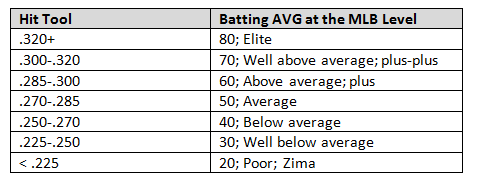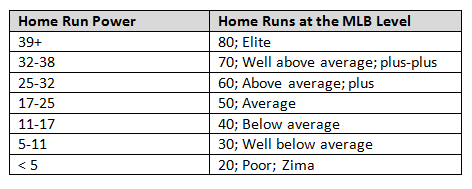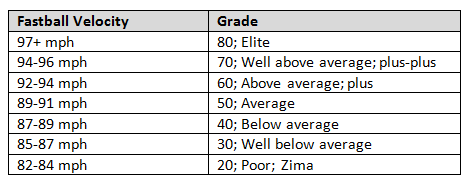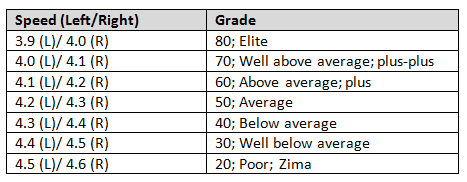For each tool (hitter) or individual offering (pitcher), a scout assigns a grade on a numerical scale from 20 to 80 where an increase in ten represents one standard deviation from the mean. A 50 grade is that mean, representing major-league average. A 80 grade, the highest score possible, represents elite skill that a few players achieve. Sometimes modify scores are used to describe the strength/weakness of a particular grade. For example, a 55 grade represents solid-average and a 45 grade represents fringe-average. Lastly, the tables I used in this section are from Baseball Prospectus Extra Innings.
20 = Poor; Zima
30 = Well below-average; Budweiser
40 = Below-average; Heineken
50 = Average; major-league regular; Guinness
60 = Above-average (plus); first-division; Racer 5
70 = Well above-average (plus-plus); all-star; Pliny the Elder
80 = Elite; Victoria or Pliny the Younger
I interchangeably use scouting grades in my evaluations so please refer to these tables if you have any questions.
The hit tool is the measure of how often a ball is properly squared up, driven with authority, and deposited into the field of play.

 The table below show how long it takes for the batter to get from home plate first base after he hits the ball. The best (fastest) times you can get is what’s called a jail break, where the runner sprints to first base. For example, to avoid a double play the hitter will run the fastest to first base.
The table below show how long it takes for the batter to get from home plate first base after he hits the ball. The best (fastest) times you can get is what’s called a jail break, where the runner sprints to first base. For example, to avoid a double play the hitter will run the fastest to first base.





